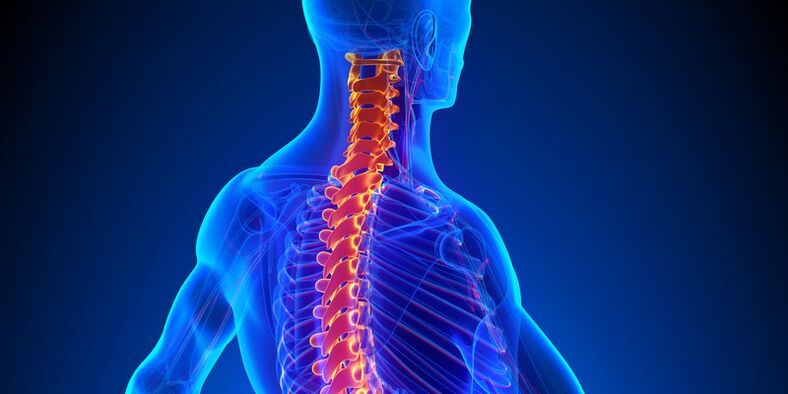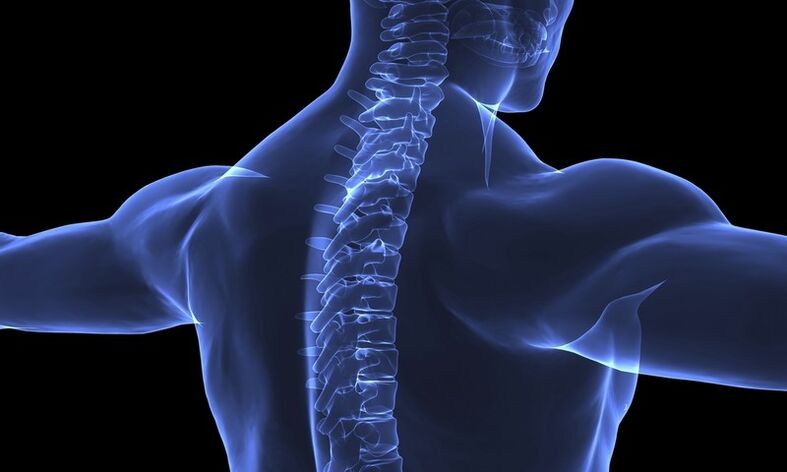If you are worried about neck pain and haven't seen a doctor yet, you need to understand the hazards of cervical osteochondrosis and what fatal consequences it can cause. Being aware of the danger must prompt you to take action.
Cervical osteochondrosis is considered to be one of the most dangerous diseases of the spine, because a large number of blood vessels and important arteries and capillaries are concentrated in the neck area. This is why the unpleasant consequences of this disease include vegetative vascular dystonia, high blood pressure, hypoxia, etc.
Cervical osteochondrosis cannot be ignored, because in most cases, it is accompanied by severe pain and vivid symptoms. Pain syndrome is an indicator of the destruction of the work of the entire body. If you ignore these signs, the results can be catastrophic, ranging from irreversible damage to the spine to death.

After reading the information below, you will find that the consequences of cervical osteochondrosis are really serious, which means that a mature and complex treatment should not be postponed under any circumstances.
General clinical picture
The invasion of the cervical spine mainly affects its lower segment, which is related to physiological characteristics and lifestyle. If you feel pain in the neck, shoulders, or head, it indicates degenerative changes, nerve compression, muscle spasm, or vertebral artery compression in this area.
Cervical osteochondrosis affects the segments of the spine responsible for the functions of the shoulder and elbow joints, thyroid, hands, esophagus, and trachea. The most common symptoms include pain in these parts of the body, hypothyroidism, seizures, numbness in the face and hands, cough and difficulty swallowing.
In the initial stages of the disease, patients complain of persistent headaches, fatigue, hearing and vision impairment, dizziness, and fainting. Of course, at the same time, there will always be severe or pulling pains in the neck and shoulders. At this stage of the disease, it is important to see a doctor, establish a diagnosis and start a course of treatment, including taking special drugs and physical therapy, and manual treatment of cervical osteochondrosis.
Otherwise, the disease will enter the next stage, and the complications of cervical osteochondrosis will begin, which is difficult or impossible to overcome.
Spinal disease
If the nerve is caught in any part of the vertebral disc in the spine, hernias and protrusions will occur.These pathologies are chronic, sometimes intensify and then subside.If the episode of severe pain has passed without interruption even for several weeks, it does not mean that the disease has subsided and everything will go away on its own. "On your own" is hard to get through. Treating protrusions and then hernias requires complex treatment for months or even years.
A herniated disc can immediately cause bone growth in the vertebral body, salt deposits, and hardened plaque in the blood vessels. In addition, the danger comes from the transmitting vertebral artery, which cannot adequately deliver oxygen and nutrients to the brain, inner ear, and upper spinal cord. Hypoxia occurs, leading to dizziness, loss of consciousness and constant fatigue. The pituitary gland is damaged, the hypothalamus is impaired, and breathing and swallowing become difficult.
The work of the heart becomes difficult, it starts to work faster, increases the rhythm, and blood pressure automatically rises, which in turn affects the blood vessels.
Destroy the vascular system of plants
Medicines-analgesics, antispasmodics, pain relief ointments, etc. -No parallel physical activity is required. Therapeutic massage will relieve pain and other symptoms, but it can only last for a short time.The body quickly adapts to the active substances, stops responding to them, the disease recurs, and the symptoms sometimes worsen.

This threatens vegetative vascular dystonia-which is the most dangerous for cervical osteochondrosis. Because the vertebral artery is compressed, the vertebral artery provides one-third of the nutrients for the brain and other vital organs, so the entire body will be affected.
By the way, many doctors do not think that vegetative vascular dystonia is an independent disease. Experts are convinced that this is just a consequence of violating other systems. And cervical osteochondrosis is often the main cause of cardiovascular disease.
First, the vasomotor center responsible for regulating vital function, heart function and normal blood pressure is damaged. Due to the lack of normal blood circulation in the upper part of the body, a person will feel numbness in his hands and difficulty breathing and swallowing. Motor skills deteriorate, may be disoriented in space, often faint, and "numb" the head.
Due to the poor blood flow, the heart is trying to make up for the "deficiency", so it starts to work faster and faster.As a result, blood pressure rises, heart rate increases, and tachycardia begins.After a period of this accelerated work, the heart muscle will be stretched.
Compression of blood vessels and spread of complications to the spine near the neck can cause dysfunction of many internal organs. In particular, the adrenal glands overwork and release the hormone cortisol above normal levels.
Over time, the disease will develop. Tachycardia, neurological disorders, high blood pressure and low blood pressure can bother people with cervical osteochondrosis.
High blood pressure and low blood pressure
Another danger of cervical osteochondrosis is to induce hypertension, which is one of the most terrifying diseases. At first, it was completely unnoticed and there were no obvious symptoms. Unfortunately, neck pain is rarely related to high blood pressure. Without proper treatment, it can develop into coronary heart disease, cause myocardial infarction, and trigger a stroke. As we all know, the death rate caused by cardiovascular disease ranks first in the world.
As for hypotension, it cannot directly kill the patient, but it can bring extremely unpleasant symptoms.
Hypotension is hypoxia caused by insufficient nutrition of the brain, cerebellum, and inner ear. Since the brain receives very little oxygen and other nutrients, it cannot ensure the full function of the body.A person lacks vitality, he feels weak, chronic fatigue, nausea, and lethargy.Naturally, he is always in a bad mood, and his performance will decline. In the long run, memory, eyesight, and hearing will be reduced, and concentration will be poor.
One of the most significant consequences of cervical osteochondrosis and the resulting hypotension is the so-called fall syndrome-accidental fainting, and the most common one-headache and nervous system disorders.
Headaches and neurological disorders
What if you do not have flu, acute respiratory infections, and normal blood pressure, but you still have frequent headaches? These are probably the consequences of cervical osteochondrosis. The nerves are squeezed, the blood vessels are squeezed, and the blood cannot be supplied to the brain in the required amount. The result is pain and dizziness, the temples beating, and the occipital area is compressed.
In such a state, it is difficult to continue to do a good job of high quality, be in a good mood, concentrate, and get active. If you prefer to swallow pills and painkillers from your head instead of seeing a doctor and undergoing a comprehensive examination, you are at risk of developing diseases and causing serious diseases in all your body systems, including neurological diseases.
Depression, panic, indifference, irritability, aggressiveness-these are all signs of violations of the human nervous system.
If the disease has reached an advanced stage, restricting your movement, restricting your life activities, resulting in constant pain, and you have been enduring it, then the appearance of neurosis is a completely natural symptom. In addition, if cervical osteochondrosis is not treated, certain syndromes related to certain organ dysfunction may occur.
Syndrome
Cervical osteochondrosis can cause the following unpleasant syndromes:
- Vestibular stem syndrome-destroys a person's life and causes great inconvenience. The main symptoms include spatial disorientation, hearing and vision loss, and fainting. The hand may loosen involuntarily, and leg weakness may occur.
- Because the vestibular organs are not functioning properly, cochlear syndrome may occur-it makes noise in the ears and darkens in the eyes.
- Sometimes laryngeal syndrome occurs. Then the patient had difficulty swallowing, there seemed to be a lump in his throat, and his voice became smaller and thicker.
The list of consequences of cervical osteochondrosis does not stop there. The above are the main things caused by this insidious disease. Remember, when you complain or suspect that you have a spinal disease for the first time, please contact a specialist.
He will conduct an inspection and develop a personal treatment plan.This is the only way to avoid the terrible consequences of cervical osteochondrosis described in the article.If you are healthy and this disease does not affect you, then please don't forget to take preventive measures in order to stay healthy in the future.


























